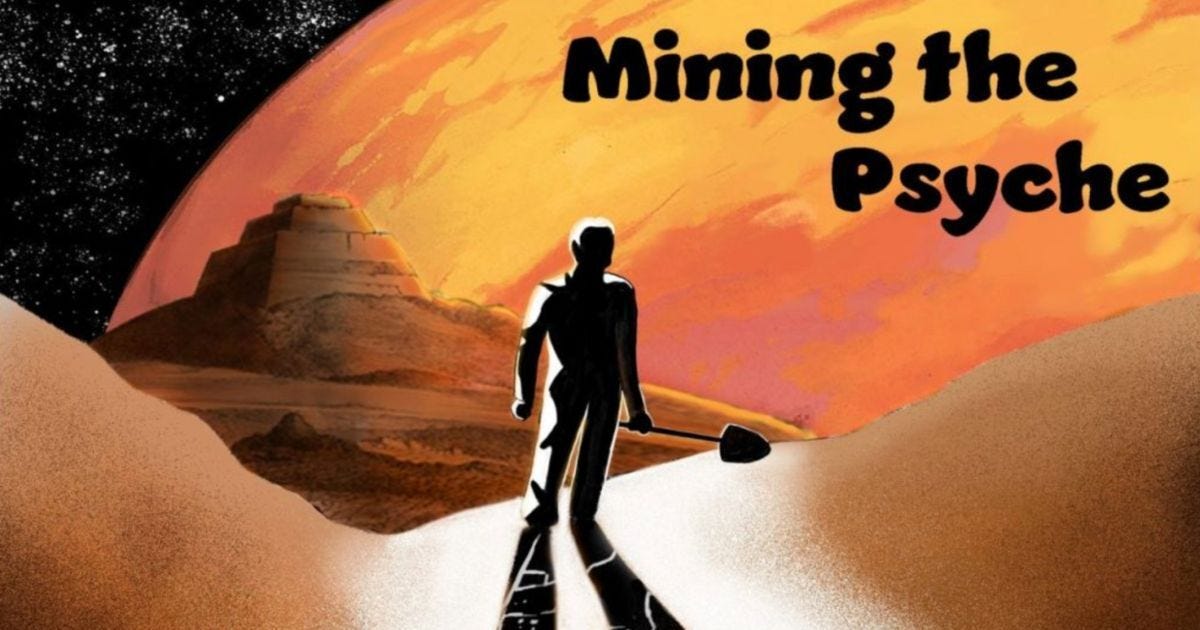In an era where self-improvement and organizational efficiency are paramount, Malcolm Hornby's novel "Mining The Psyche" offers a fresh cultural perspective on human behavior and interaction. Through a captivating blend of Jungian-based psychology and modern business analogies, Hornby presents a framework for understanding the complex interplay of archetypes within our psyche.
The Dream That Sparked a Theory
Hornby's journey into the realm of archetypes began with a vivid dream in 1981. "I was looking down into a bedroom. There were four beds. With four couples," he recounts. This dream, rich in symbolism, suggested to Hornby that his psyche comprised "four masculine aspects and four feminine aspects," a revelation that would form the foundation of his novel and his understanding of human behavior.
This cultural perspective on the human psyche diverges from traditional views, offering a nuanced approach to understanding our inner workings. Hornby's interpretation of his dream led him to believe that "my psyche was being portrayed as having four masculine aspects and four feminine aspects," a concept he believes applies universally.
The Compass of the Psyche
In Hornby's framework, the masculine archetypes are represented by the points of a compass, each embodying a distinct aspect of human cognition and behavior.
The Northman: The Decision-Maker and Leader
The Northman archetype represents leadership and decision-making. As Hornby explains, "The first idea was that one of these male aspects had to do with decision-making and leadership." In a business context, the Northman could be a CEO or a departmental head. This archetype is crucial for setting direction and making key choices that guide an organization or group.
The Southman: The Executor and Doer
The Southman archetype is connected to "the act of doing," as Hornby puts it. This is the archetype responsible for executing decisions and carrying out tasks. In a business setting, the Southman could represent labor, but as Hornby notes, "it can be a high-quality labor."
The Southman craves respect for their work. Hornby points out that "the need for respect is quite a driving factor" for this archetype, and that many labor disputes arise from Southmen feeling disrespected or undervalued.
The Westman: The Knowledge Gatherer and Developer
The Westman archetype is associated with "the development of knowledge," according to Hornby. This archetype is crucial for informed decision-making "for a decision maker to make an informed decision requires knowledge."
In a business context, the Westman might be found in research roles. They excel at gathering and developing useful information.
The Eastman: The Communicator
The Eastman archetype represents "the ability to communicate," Hornby explains. This archetype is vital for both acquiring and transmitting knowledge. In a business setting, Eastmen might be found in marketing or public relations roles.
Hornby emphasizes the importance of the Eastman, noting that "communication is also a vehicle to acquiring knowledge.
This cultural perspective on organizational roles provides a fresh perspective through which to view workplace dynamics. As Way Yuhl, who interviewed Hornby for an episode of the Cultural Perspective, notes, "In real life... most people in business are not communicating well. Northmen are not communicating very well with the Southmen. Research is not getting to the Eastman."
The Dance of Archetypes
Hornby's novel doesn't just identify these archetypes; it explores their interactions and the potential for conflict when they overstep their boundaries. Yuhl shares a personal anecdote that illustrates this dynamic: "I taught high school science... I was essentially the Southman there, laboring in the classroom. And the Northman principal came in and she tried to suggest certain experiments I should do with the students. . . . [I thought], why are you trying to tell me that I'm not doing my job well?”
This scenario, familiar to many in various professional settings, highlights the importance of understanding and respecting the domains of different archetypes. Hornby explains, "It's a problem when you take a Northman who's not well developed and he goes into the Southman's domain where he just doesn't understand the Southman's job. You end up with resentment."
The Path to Integration
The ultimate goal, according to Hornby's cultural perspective, is not to embody a single archetype, but to develop all aspects of our psyche. "To get one's act together, all of these eight aspects are equally important," Hornby asserts. "And what's necessary is for them all to function coherently and for one not to dominate the other."
This holistic approach to personal development offers a roadmap for individuals seeking to improve their interactions in both professional and personal spheres. By recognizing and nurturing the various archetypes within us, we can become more adaptable, understanding, and effective in our daily lives.
As we navigate the complex maze of human interactions, Hornby's work serves as a compass, guiding us towards a more integrated self and a deeper understanding of those around us. In a world often fraught with miscommunication and conflict, this cultural perspective offers a beacon of hope for better understanding and cooperation.







Share this post